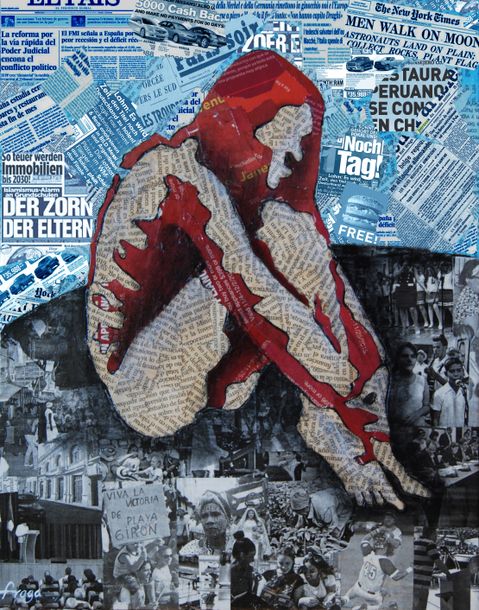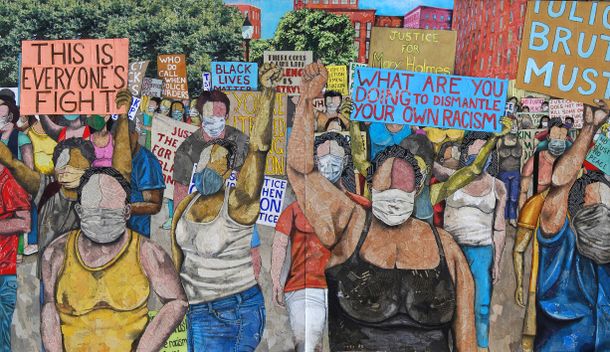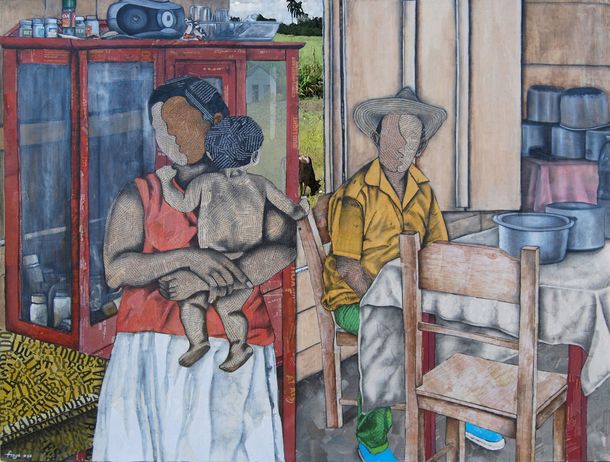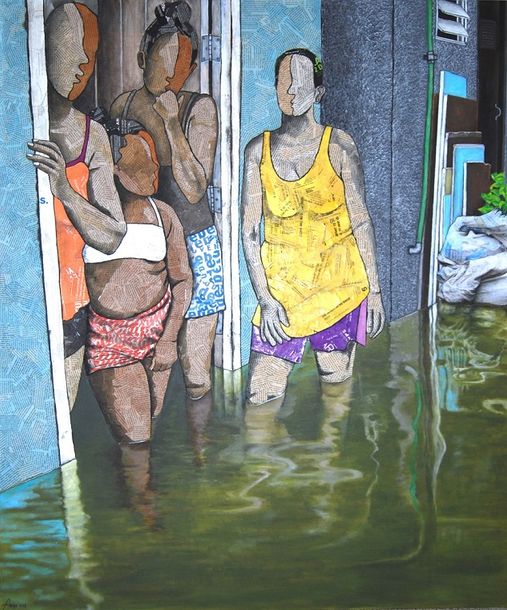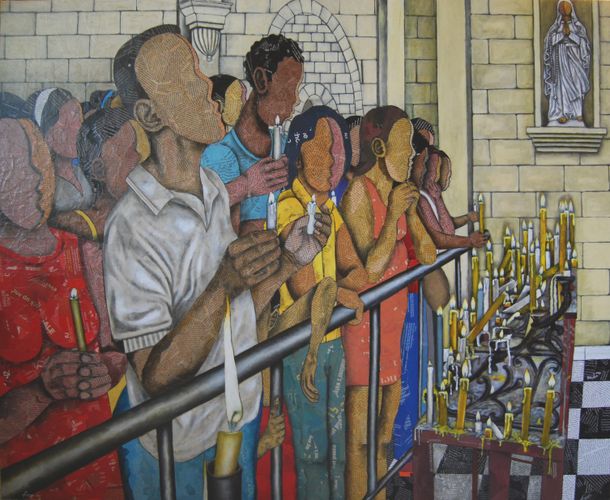
Elisa
Eduin Fraga
Born in Havana, Cuba, for Eduin Fraga painting is an inherently political gesture, as representing the reality around and our time is indeed already about offering a specific perspective and reading on it.
In the dialectics between the painter and the viewer, in fact, there’s already an exchange of positions, a negotiation of potentially different beliefs and views, encouraging a critical confrontation about what is represented.
Fraga seems to be perfectly aware of this fact, in capturing dynamic fragments of society within his works by blending newspaper collage and paint on the canvases.
In fact, with a unique technique that perfectly combines and integrates the two, the artist incorporates in his paintings local newspapers as well as from other parts of the world and other languages, physically bringing into his canvases the harsh reality of current global events. In this sense, electing to avoid any traditional idea of mimesis Fraga doesn’t represent, but rather concretely and materially present, today’ reality.
Despite his seemingly cartoon and illustrative style, this makes figurative paintings more than present, more than real, as alternatives to the representation of the same reality offered by the media.
In fact, many experts of semiotics and visual studies have commented on the risk that the endless duplication and remediation of images of current events,, may eventually result in making these images ineffective, less real, regardless of how dramatic or tragic they can be. As suggested by W. J. T. Mitchell, one of the most important scholars of visual culture and iconology, today images of war, poverty, suffering are mostly destined to a detached consumption of the viewer that, in this constant flux, has already lost the sense of their real context, meaning and implications. For that reason, they can be easily manipulated, especially if accompanied by strategic words and headlines that can strongly influence their reading.
In contrast with all that, Fraga pictures appropriate the medium itself (newspapers) to build a more personal but more sympathetic narrative, while also unveiling how different media, in different languages, may already offer more than one version of the same news.
In this sense, his works can be considered strong statements on specific socio political situations, exemplifying the complicated entanglement of events, daily life, global media narration, and impacts on people daily lives that connects his home country's current dramatic situation as well as his experience of the United States to today’ global politics.



